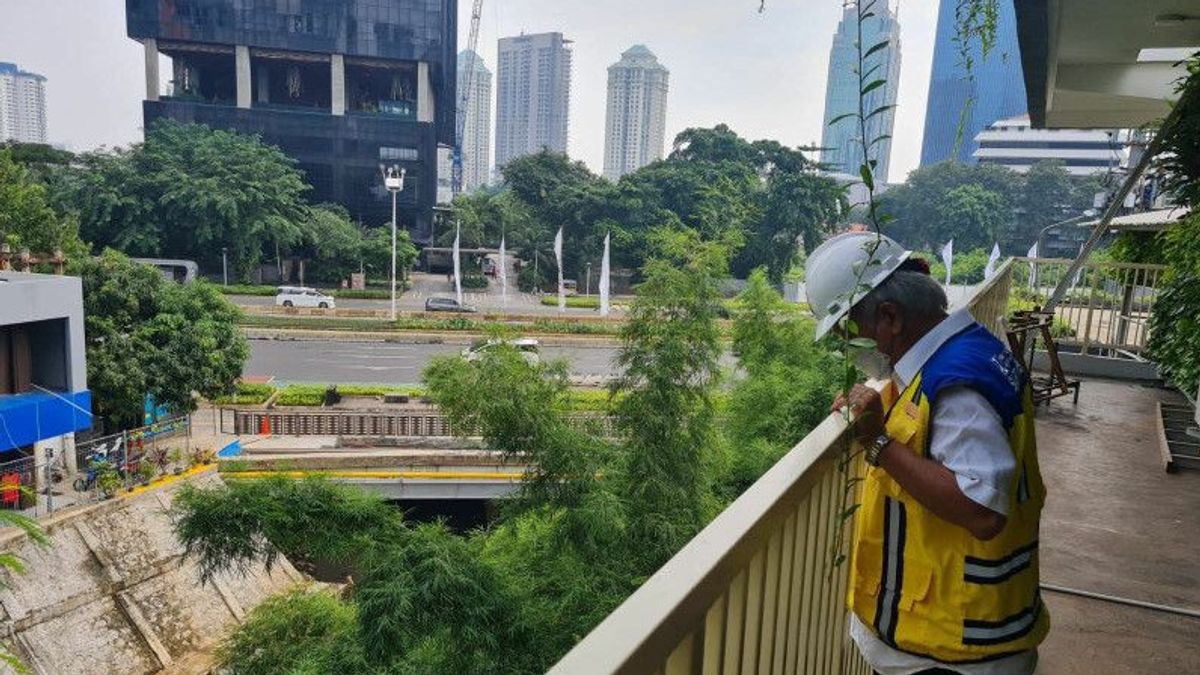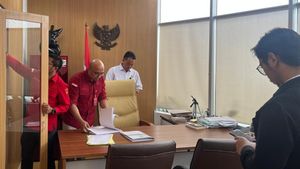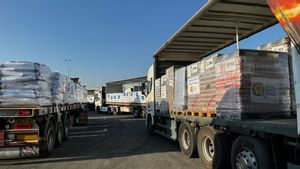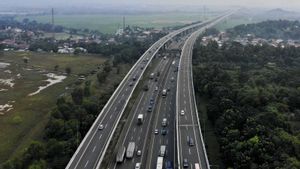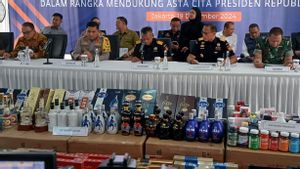JAKARTA - Minister of PUPR Basuki Hadimuljono hopes that the Krukut Wastewater Management Installation (IPAL), Jakarta, can prevent pollution of water bodies due to domestic wastewater, as well as provide added value in the form of clean water for watering parks and city public spaces.
"Wastewater, both black water and gray water, generated from domestic activities needs to be treated at the WWTP before the effluent water from the WWTP is channeled to the receiving water body," Basuki said in a statement quoted by Antara, Saturday, June 25.
The Krukut IPAL was built and managed by Perumda Paljaya. The Krukut IPAL covers an urban scale that serves zone 0 DKI Jakarta, covering the Rasuna Said, Mega Kuningan, Jalan Jenderal Sudirman, SCBD, Senayan, Gatot Subroto, Manggarai, Guntur, and Setiabudi areas.
Together with the Setiabudi IPAL which was built by the Ministry of PUPR, these two IPALs serve the Sudirman - Kuningan office area or the equivalent of around 2.7 million people.
The Krukut WWTP has a capacity of 8,600 cubic meters/day and will start operating in August 2021. The technology uses a Moving Bed Biofilm Reactor (MBBR), i.e. wastewater is treated using an aeration system and media so that the treated water will be safe to be returned to the environment in accordance with the Ministerial Regulation. LHK No. 68 of 2016.
This technology is the same as the Setiabudi IPAL. The value of Biochemical Oxygen Demand (BOD) is reduced from 150 - 200 mg/liter to below 30 mg/liter, thus meeting quality standards and is safe for the environment.
Of the total processed Krukut WWTP, 30 percent of the volume of the water is reprocessed to be used for non-consumable water needs such as cement mixture for construction, watering plants and flushing.
Biological management of WWTPs such as MBBR will inevitably produce sludge. The sludge produced by the Krukut WWTP will be further processed at the Pulo Gebang Sludge Treatment Plant (IPLT).
The Krukut WWTP was built on an area of 1,200 square meters of Setiabudi Pump Station. Initially, this land only functioned to pump the flow of wastewater from offices and settlements in zone 0.
Expert Staff of the Minister of PUPR for Technology, Industry and Environment as well as Spokesperson for the Ministry of PUPR Endra S. Atmawidjaja added that the MBBR technology for domestic waste treatment used in the Krukut IPAL will be one of the references for the PUPR Ministry in determining the type of wastewater treatment technology in the IKN area. Archipelago.
In addition to reducing pollution, water that has been treated by reducing the value of BOD, Nitrogen and Phosphorus can be accommodated in reservoirs to support the landscape of the Nusantara IKN Area.
The English, Chinese, Japanese, Arabic, and French versions are automatically generated by the AI. So there may still be inaccuracies in translating, please always see Indonesian as our main language. (system supported by DigitalSiber.id)
